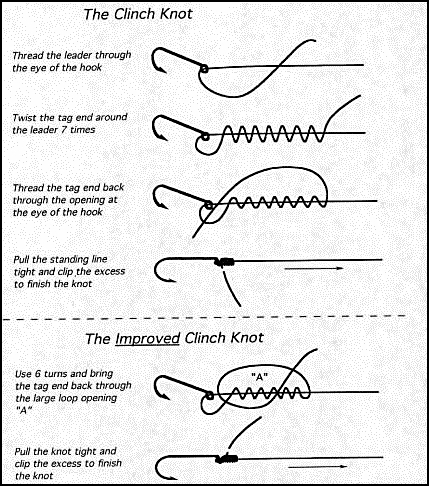A guest post on fishing knots by Steve Jacobs
As a Blogger it is always nice when someone appreciates your work! Back not so long ago, I was asking other fishing Bloggers to do guest posts for them, linking to other prominent Blogs and sharing their material with my fishing friends. I have also been asked by a few if they could guest post for me. This guest post comes via Steve Jacobs. Steve is a representative for Sportsman’s Warehouse and shares with us how important tying a solid knot really is to sport fishing.
Fishing Knots: The Basics
If you are going to be serious about catching fish, you need to know how to properly use and maintain every component of your fishing equipment. More than that, though, you need to understand how it all works together and what techniques will lead to the best results. Just like any other serious endeavor, it requires a strong foundation in the basics to really succeed. This means learning everything you can about the best fishing gear, the best bait, the most effective strategies, and even how to tie the most reliable knots.
That’s Knot Right
A strong fishing knot is absolutely essential to properly tie the line to the hook, lure, or other tackle, and you need to have the ability to tie the kind of knot that will be reliable enough to bring in the fish. There are a few things you can do to make sure you’re getting everything right.
• Leave about a foot of length on the tag end of the line for proper knot tying. This will give you enough room for a good knot and a little leeway if you are still unfamiliar with the technique.
• Wet the knot with saliva before you pull it tight. This will allow you to pull it even tighter and help avoid damage to the line.
• Trim the excess line. Many anglers are tempted to leave a lot of extra line in case the knot slips a little. However, if you’ve done it right, and pulled it tight enough, it shouldn’t slip. And that excess line is just asking to snag on rocks and weeds.
• Practice, practice, practice! You can use a dulled hook or put a cork over the pointed end and retie the knots over and over until it becomes second nature. Then it won’t matter if you’re camping in your Eureka tents or packing everything up in your dark garage, you’ll be able to tie the right knots without any problems.
Just remember that knots are never as strong as the line. The simple act of tying the knot in the first place actually introduces weaknesses into the line, so you need to be aware of the knot’s strength (which is usually expressed as a percentage of the line strength). If the knot is rated at 80%, then you will know that if the line holds 10 pounds, the knot will probably break at 8.
Knot Learning
There is an extremely wide array of fishing knots that dedicated anglers can learn and use every time they head out on another expedition. If you had to boil it down to just a few, though, you should learn the knots that will cover a variety of tasks.
The Palomar Knot – If you only learn one knot, this is probably the best choice. It’s a good, general-purpose knot that can join fishing line to swivels, snaps, hooks, lures, and more. It has a good strength rating, and is good for lines up to 20 pound test.
The Albright Knot – This knot is used for joining monofilament lines that have unequal diameters or creating shock leaders. It can also be used to connect monofilament to wire.
The Double Surgeon’s Loop – This is a quick and simple knot and it is a good way to tie a loop in the end of a leader. It is relatively strong and can be used for joining lines, too.
The Nail Knot – Use this knot when you need to attach fly line to fly line backing, or when you need to attach a leader line. It can also be used to attach two lines that have different diameters.
The In-Line Dropper – When you need to create a loop in the middle of your line to attach a hook or other rig, this is the knot to use. It’s fairly simple and very effective.
There are many other strong, reliable knots that can improve your fishing experience, but if you start with the basics and work your way up from there, you’ll have a lot more success every time you head out to your favorite fishing hole.
~Steve Jacobs


2 comments
The article encompasses every little thing one need to know about fishing knots. Great post!
Thanks, hope to see you back again soon.
~Mike